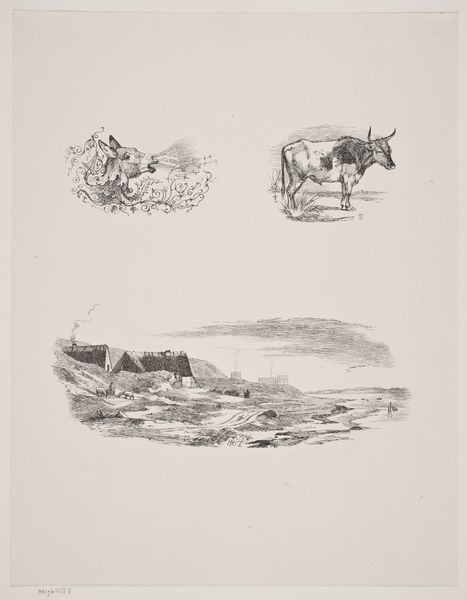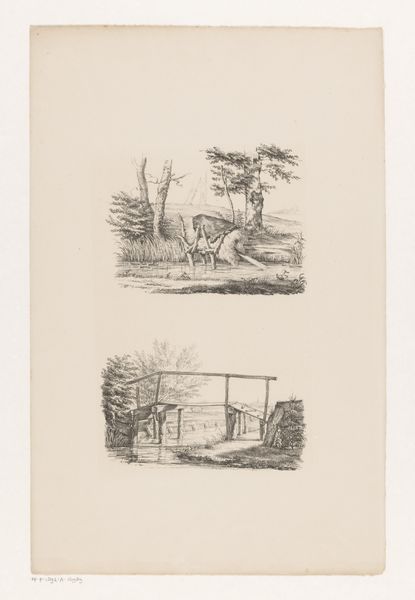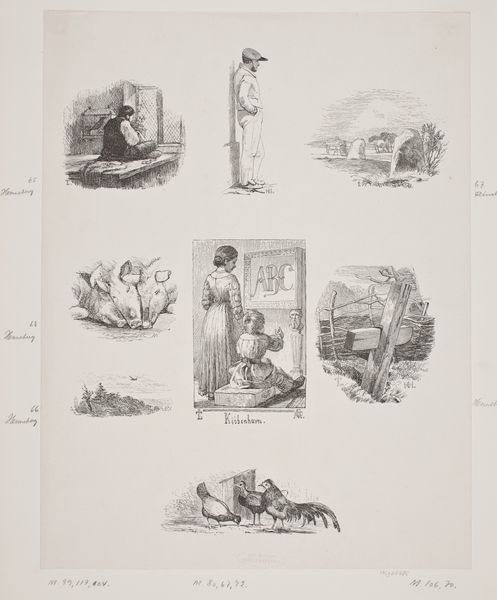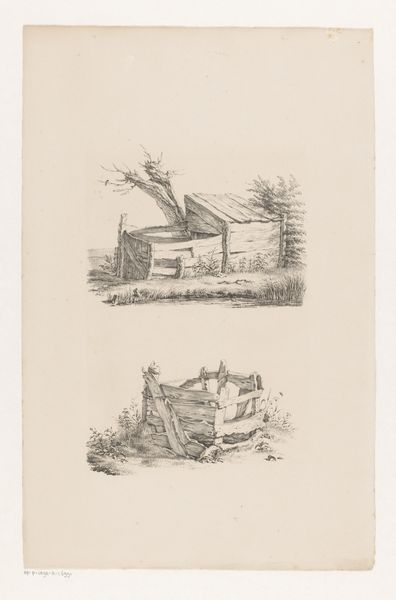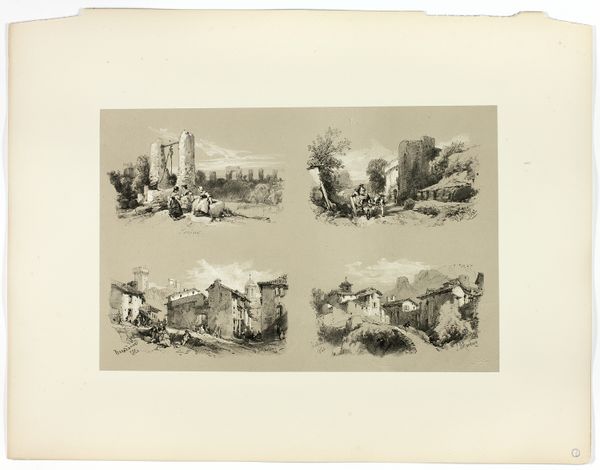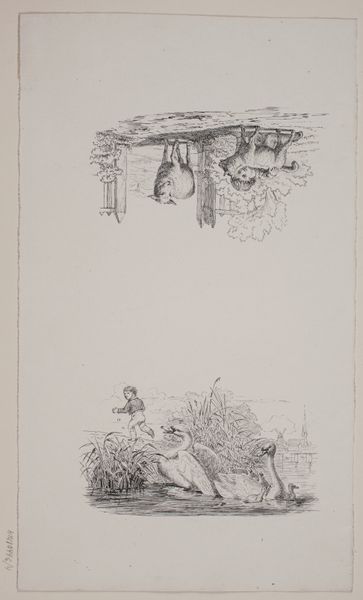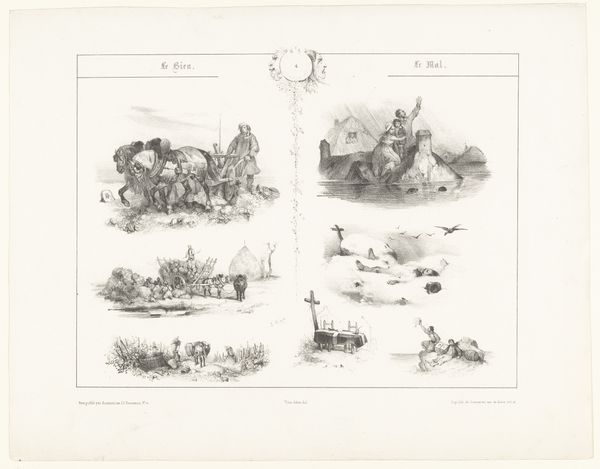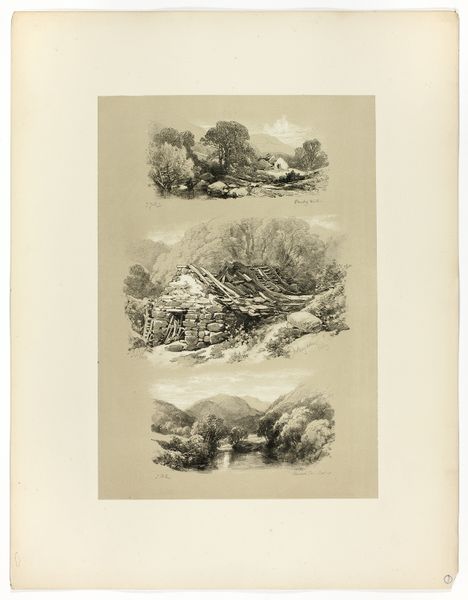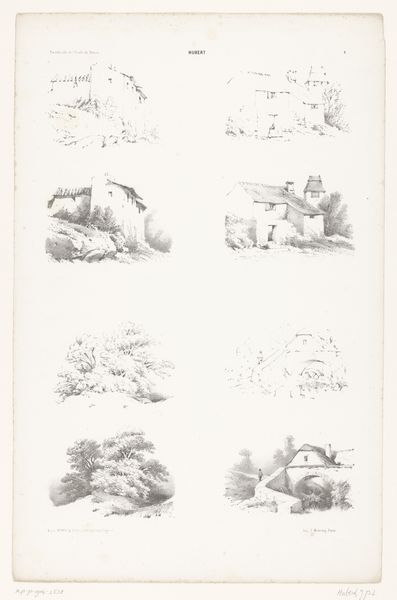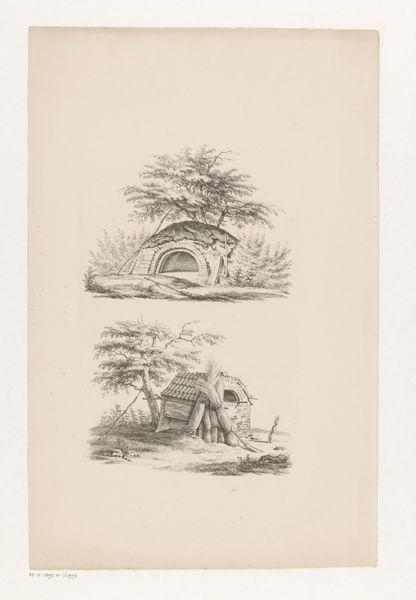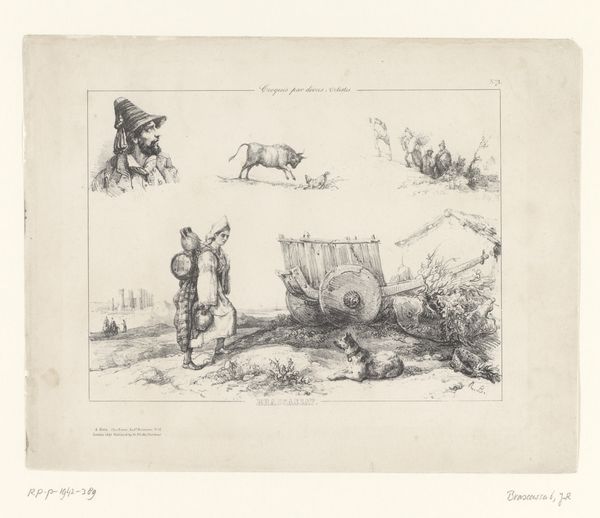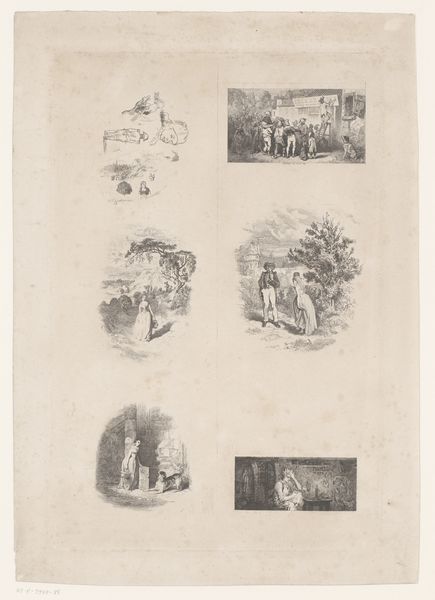
Nytryk af smedien, to stubmøller, lamaen og Helene grav 1840s
0:00
0:00
print, woodcut
#
pencil drawn
#
amateur sketch
#
light pencil work
#
shading to add clarity
# print
#
pencil sketch
#
incomplete sketchy
#
pencil drawing
#
ink drawing experimentation
#
woodcut
#
pencil work
#
remaining negative space
Dimensions: 337 mm (height) x 263 mm (width) (bladmaal)
Andreas Flinch created this print of various scenes using etching, a technique favored for its detailed lines and tonal variations. Made in Denmark, it gives us a glimpse into the 19th century, a time of significant social and economic transition. Consider the choice of imagery: windmills and rural scenes evoke an idealised version of Danish heritage. But, this was also a time of increasing urbanisation and industrialisation, processes that threatened the traditions of Danish society. By representing specific elements of rural life Flinch’s print engages with a wider artistic trend of cultural preservation. The institutional history of the museum here is also significant; what did it mean to collect and display such images in a period of rapid change? Understanding these images fully requires exploring a range of sources: historical documents, cultural studies and art criticism all shed light on how art reflects and shapes its own social context.
Comments
No comments
Be the first to comment and join the conversation on the ultimate creative platform.
